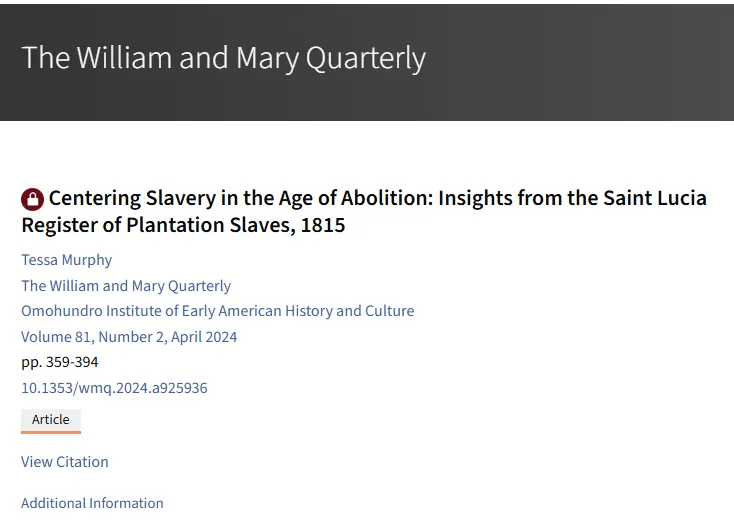"Centering Slavery in the Age of Abolition: Insights from the Saint Lucia Register of Plantation Slaves, 1815"

Scholars have used a range of sources, including oral histories, written accounts, and plantation inventories, to reconstruct the lives of people subjected to slavery in the Atlantic world. Yet in contested colonies such as Saint Lucia, the experiences of enslaved people remain little known. Attention to a seemingly static, bureaucratic document—the 1815 Register of Plantation Slaves—provides details about all 12,726 individuals who were enslaved on estates in Saint Lucia just one year after France ceded the island to Great Britain. This, in turn, facilitates the reconstruction of life histories and genealogies of people who labored on the plantation frontier of the British Empire during the age of abolition. As one of 671 such documents created throughout the empire in the decades after Great Britain's 1807 abolition of the transatlantic slave trade, the 1815 Saint Lucia Register of Plantation Slaves illustrates the potential for such documents to significantly enlarge current understandings of slavery. The register testifies to the importance of regional trafficking and the role of reproductive labor in giving rise to a creolized enslaved population in Saint Lucia, and it poignantly illustrates how these phenomena affected enslaved individuals and families.
-with support from Working Group HS11: The Central New York Early Americas Consortium